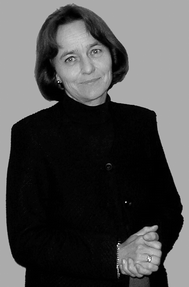New Editorial Board Member: Professor Brit Salbu
Scientific background and experience
I am a doctor of philosophy from the Department of Nuclear Chemistry, University of Oslo, and professor in nuclear chemistry/analytical chemistry at the Agricultural University of Norway. I have been head of the Isotope Laboratory, AUN, since 1987, which is the local radiation protection authority for all institutions in the Aas region. I am also head of the Environmental Chemistry Section. During 1999–2001, I was a member of the University Board, head of the University Research Committee, and member of The Norwegian Research Council Board for Bioproduction.The scientific field includes nuclear/radiochemistry, analytical/environmental chemistry, radioecology and impact assessments. I have published about 230 articles, and been involved in about 20 expeditions in Norway and internationally (Russia, Belarus, Ukraine, UK, France, Sweden, Ethiopia). I have participated in many international research programmes, including the EU 3, 4, and 5 frame programmes. I am an appointed member of the Norwegian Academy of Sciences and Letters, and appointed as a group leader.
Relevant experience to the present work
I am an advisory member of the Norwegian National Committee for Preparedness related to Nuclear Accidents, since the early 1990s, with special tasks associated with measurements, countermeasures and impact assessment. For example I have gained experience from impact assessment of the Chernobyl accident, the Komsomolet accident, the Kursk accident, and assessments associated with potential accidents at nuclear installations situated in the Kola peninsula.I am an advisory member of the Norwegian–Russian expert group on contamination of the Northern Seas, since 1992, and actively involved in 3 joint expeditions related to impact assessment of radioactive waste (including 6 submarine reactors with fuel) dumped in the Kara Sea/Novaya Zelmya fiords and two pieces of field work at Mayak PA, Ural, concerning the impact assessment from historic releases and present contamination (phase I) as well as from future potential accidents (phase II). Furthermore, expeditions to the rivers Ob and Yenisey have been performed to identify releases and the potential environmental impact from Mayak and Krashnoyarsk nuclear installations. Ongoing work will be initiated in relation to nuclear waste stored in the Andrejeva Bay at Kola. I am also referee and advisor to the Arctic Monitoring and Assessment Programme (AMAP), radioecology section.
Within the French–Norwegian collaboration on nuclear problems I headed a working group associated with releases from the La Hague reprocessing plant. Experiments with the effluent were performed in 1996, showing that radionuclides in the effluent were to a certain extent associated with colloids and particles. Similar experiments were performed in collaboration with BNFL, NRPB and MAFF with effluents from Sellafield in 1989, showing the relevance of colloids and particles.
I am head of the International Atomic Energy Agency (IAEA) Co-ordinated Research Program (CRP) on radioactive particles from different nuclear sources such as nuclear weapon tests (e.g. Semipalatinsk in Kasakhstan), nuclear accidents (Windscale, Chernobyl), aircraft accidents (Thule in Greenland and Palomares in Spain), reprocessing facilities (Sellafield in the UK, La Hague in France and Mayak in Russia). Based on samples from these sites, the Isotope Laboratory has contributed to the development of new advanced techniques using synchrotrons for particle characterisation needed in impact assessments. Thus, depleted uranium particles from Kosovo and Kuwait have been studied in collaboration with IAEA. I have been advisor to NATO/NACC programmes and I am currently appointed member of NATO scientific panel Environmental Sciences, Earth Science and Technologies.
| This journal is © The Royal Society of Chemistry 2004 |

